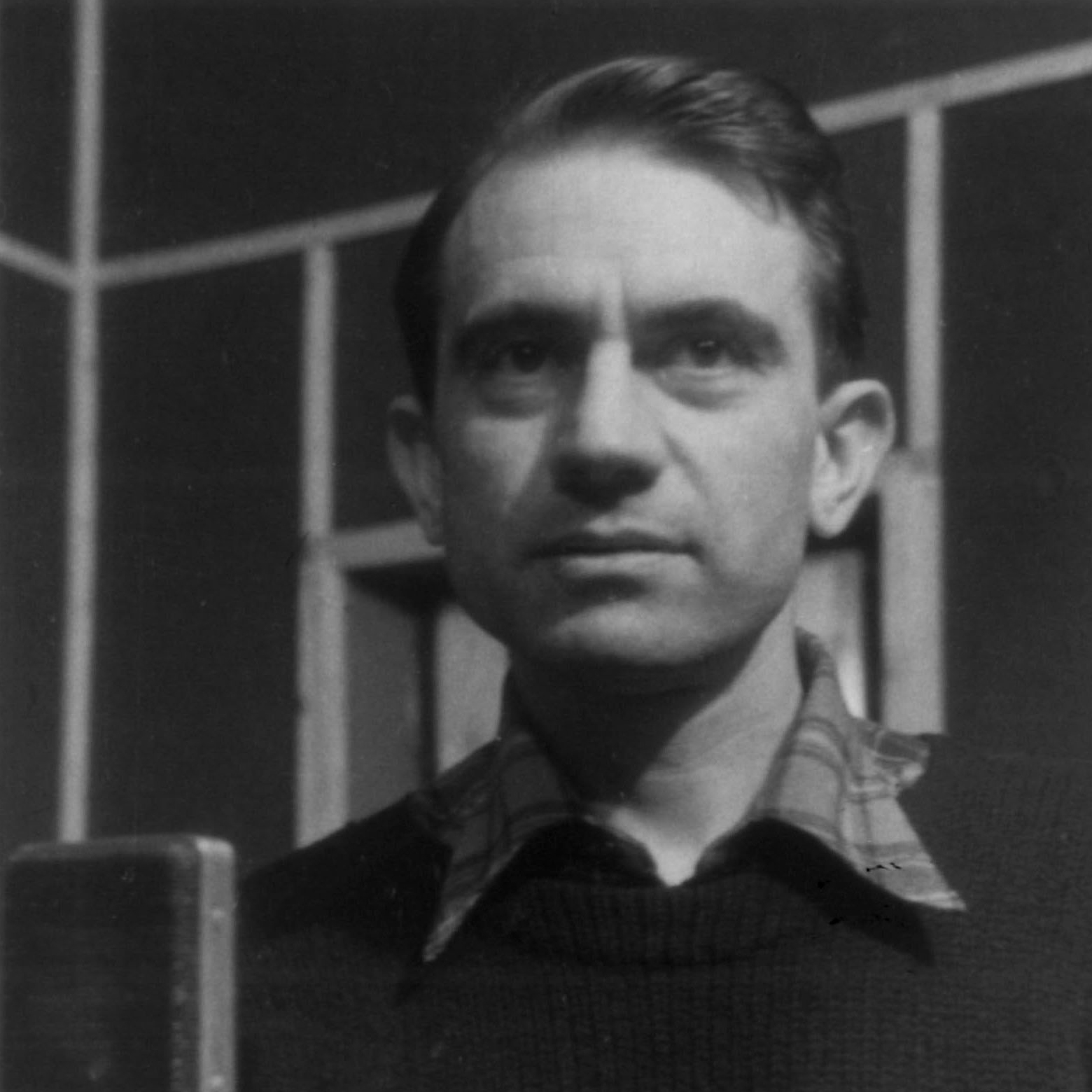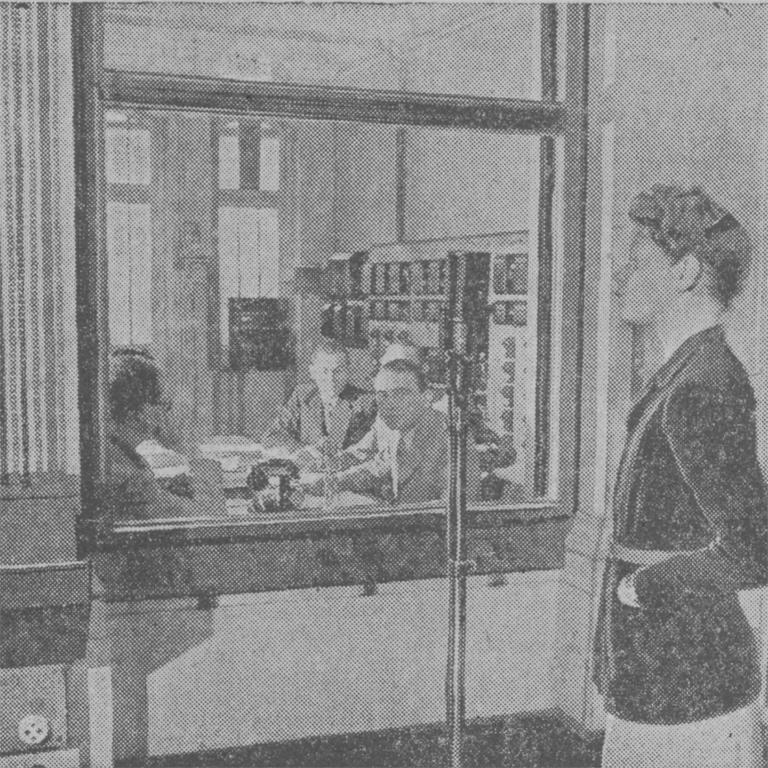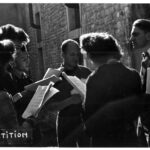People
Pierre Schaeffer

Objects in the Database
Pierre Schaeffer
Son of a musician and a voice teacher, Pierre Schaeffer received a Catholic education, practiced theater as a boy scout, and learned to play the cello at the conservatory in Nancy. He chose to pursue engineering, gaining admission to the Polytechnique in 1929, where he continued his work in theater, followed by studies at the Supélec (top-ranked graduate school for electrical engineering). He then worked briefly in telecommunications, which he found boring, and then succeeded in joining the French national radio broadcasting service in 1936 (one of his jobs was to help improve the recording setup of the Opéra de Paris). Schaeffer was convinced that the medium of radio was truly a revolution, and as early as 1939 he envisioned an innovative training program for radio technicians and actors. Drafted and then demobilized, he joined the movement of Catholic intellectuals and artists who were working to organize educational activities for young people under the Vichy regime. After coordinating “Radio-Jeunesse”, he founded a cultural association called Jeune France in 1941, in a cunning attempt to thwart the increasingly hard-lined ideological government of that time. Jeune France was short-lived, as it was dissolved in March 1942 and Schaeffer was transferred to Marseille. In January 1943, after a preparatory training course organized with Jacques Copeau in Beaune, he created the RTF Studio d’essai, which was to advance the radiophonic arts, and he joined the French Resistance. It was from this Studio, where they were clandestinely working to free the airwaves, that Schaeffer broadcast a call to arms of the French Resistance on the 22nd of August 1944. When Schaeffer was sent abroad for a mission (in 1945), the Studio became the Club d’Essai, directed by poet Jean Tardieu. In 1953, he created SORAFOM (radio broadcasting society for the French overseas territories), and then bolstered this with a training studio to give African radio station managers adequate technical training. All the while, his experimentation with radio and his passion for music led him to invent “musique concrète”, which is today the best-known aspect of his multifaceted life: in 1948 he composed the “noise studies” (études de bruits), in 1950, Symphonie pour un homme seul marked the beginning of his collaboration with Pierre Henry, in 1951 he founded the GRMC (Groupe de recherche de musique concrète), which became in 1958 the Groupe de recherches musicales (GRM), whose members included Luc Ferrari, François-Bernard Mâche, Bernard Parmegiani, François Bayle… In 1960 the research department of the ORTF was born, a collective, effervescent structure which was the root of a number of pioneering radio shows, and which inspired Schaeffer to write a number of important theoretical texts, both musicological (Traité des objets musicaux, 1966; Solfège de l’objet sonore, 1967) and philosophical (Machines à communiquer, 1970-1972). He later became a professor at the French national music conservatory (responsible for electroacoustic music and musical research), a media theorist, the first to have thought about and designed an archive for audio and audiovisual works, and an advisor for a number of national and international institutions. Schaeffer used the written word to understand his many successive lives, thereby literally archiving his own path as an artistic and institutional innovator.
Selected Bibliography:
Schaeffer Pierre, Essai sur la radio et le cinéma : esthétique et technique des arts-relais [1941-42], édition établie par Sophie Brunet et Carlos Palombini, Paris, Allia, 2010 / Ensaio sobre o rádio e o cinema. Estética e técnica das artes-relé 1941-1942, Text by Sophie Brunet and Carlos Palombini, with the collaboration of Jacqueline Schaeffer. Preface, presentation, critical apparatus and translation by Carlos Palombini, Belo Horizonte, Editora UFMG, 2010.
Schaeffer Pierre, Propos sur la coquille (Notes sur l’expression radiophonique) (1946), followed by “Entretien avec Rudolf Frisius” (1987), Preface by Jacqueline Cartier, “A la recherche de Pierre Schaeffer”, Arles, Phonurgia Nova, 1990.
Schaeffer Pierre, Dix ans d’Essais radiophoniques. Du Studio au Club d’essai, 1942-1952, ten 33 rpm records + a booklet (one hundred copies printed), 1953.
Schaeffer Pierre, Dix ans d’Essais radiophoniques. Du Studio au Club d’essai, 1942-1952, 5 albums of 2 LPs, [s.l.] [s.n.] 1962. [edition « slightly reworked and enlarged, particularly with regard to chapter V ‘Machines à mémoire’, produced in 1961 by the RTF Research Department under the direction of Sophie Brunet. »]
Schaeffer Pierre, 10 ans d’essais radiophoniques. Du Studio au Club d’essai, 1942-1952. Une anthologie des arts et techniques radiophonique (4 CD), Paris, Phonurgia Nova/Phonothèque de l’INA, coll. « Les grandes heures de la radio », 1989 [1994] [edition that « takes up the 1953 libretto, to which it adds a libretto of texts by Pierre Schaeffer and Jacques Copeau on the technique and aesthetics of radio, and the addition of an iconography, absent from previous editions. It borrows the sound materials from the 1961 edition which, after restoration, were mounted according to the original 1953 plan, thus preceeding the visit of the ‘coulisses du studio‘ and the meeting of the ‘personnages de la radio‘ by the ‘projection of the works’. »]
© 2015 – 2025 Humboldt-Universität zu Berlin







